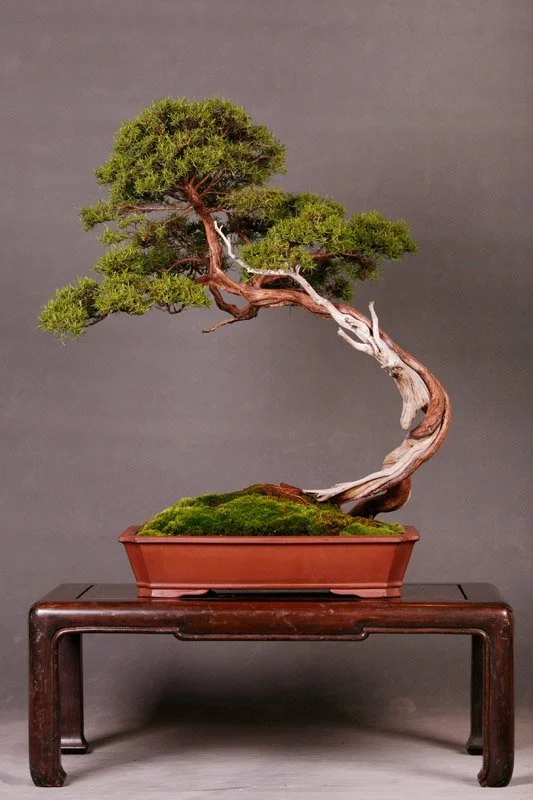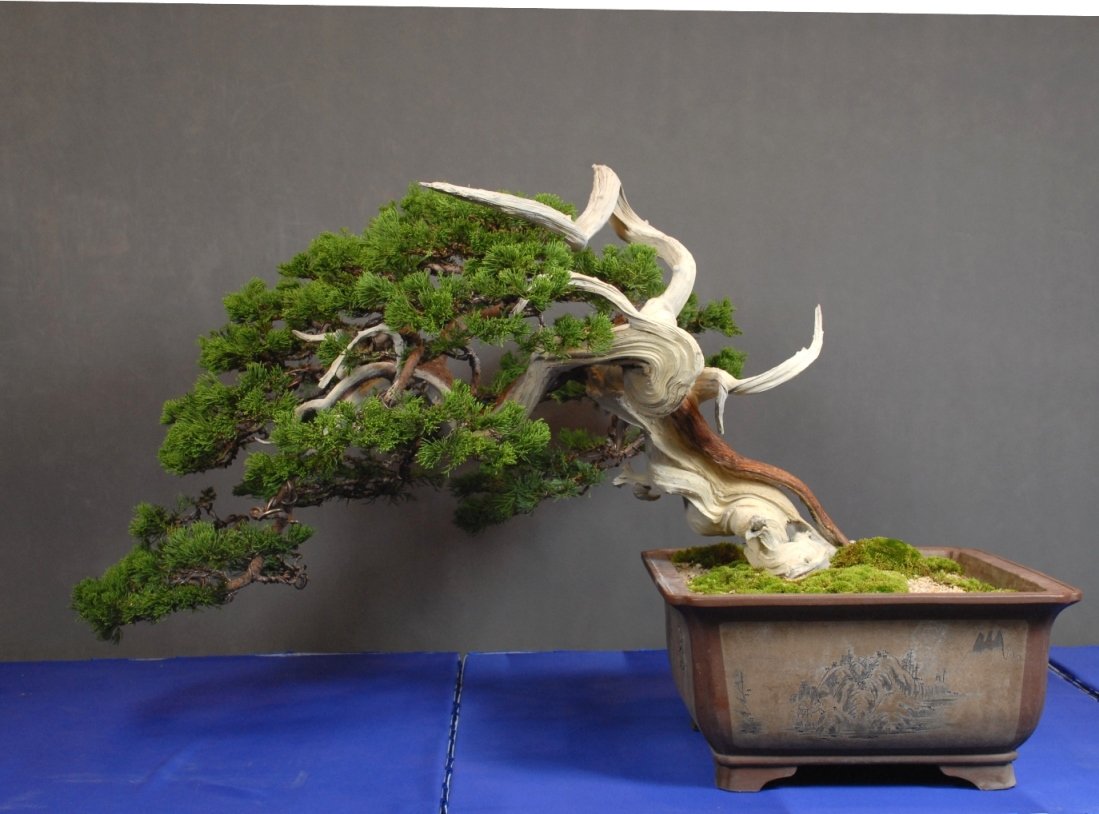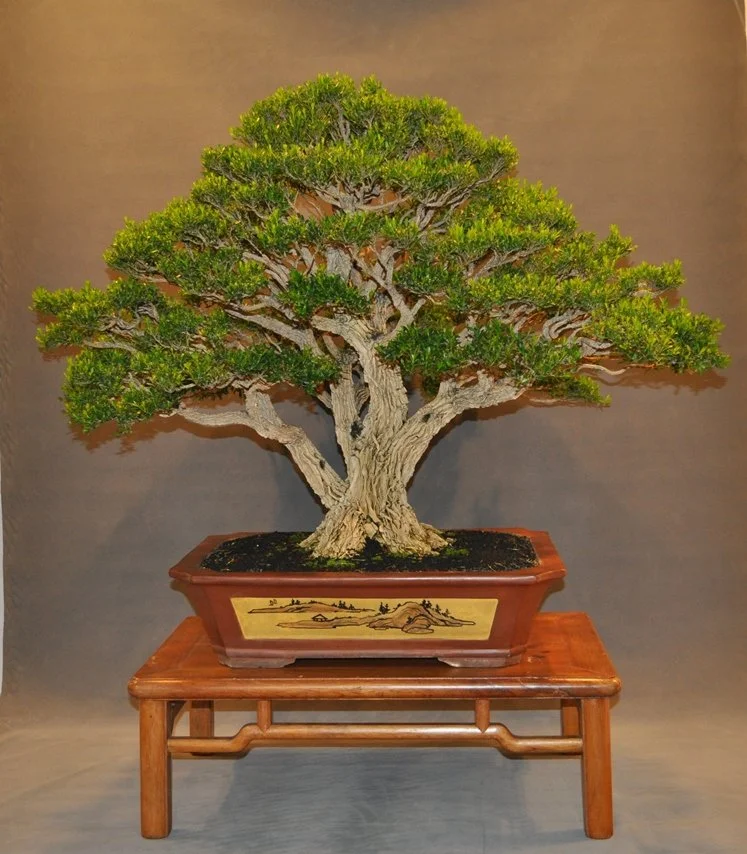Penjing
The Chinese art of Penjing began in the Tang dynasty and peak in the Ming and Ching dynasties, dated back more than 1,700 years of history. Penjing or Bonsai is the epitome of alpine trees in the wilderness forest. Styling of trees are carried out according to the habit and form of growth in different geographical location and climate which influences the natural morphology of growth. Cultivation needs experience, special soil composition and a stringent regime on watering and fertilizing. Each specimen of Penjing requires more than a decade of work and effort on training and cultivation of the tree. Horticultural knowledge, with a high degree of patience together with the creator’s artistic skill are pre-requisites in order to produce an artistic creation or art of work.
盆景
中國盆景藝術,始於晉唐,盛於明清,迄今已有一千七百餘年歷史。盆景藝術,是高山大樹曠野林木之縮影,根据树生长地域气候 和自然生长习性规律形态而模仿出的造型。培植需經驗,特选泥土,浇水,施肥,至為嚴格。雖一花一樹之培植,等閒耗十數年功夫,既需園藝常識,,與高度耐性,而盆景則指經過藝術設計與園藝技術之加工,而創造成景之藝術品。
难度在把高大木质的树材料要花很长时间后才能成功把它缩小容纳在小盆内,同时要表现出理想的根,干,枝,椏,叶,花,果,并在整体的配搭上形成一幅自然美的景观,出现人工痕迹, 不齐全的部位或不自然的形态是不上乘的作品。
不单注重树的造型, 还要照顾土上青苔(植被),好的或古盆的对佩,理想的几架配搭把这活的艺术提升到最高的层次,随着岁月累积树态一直在变化。










